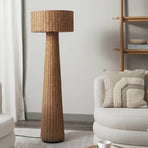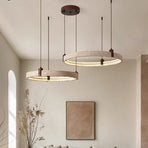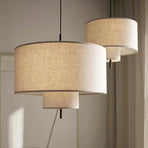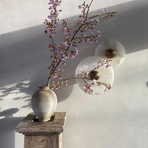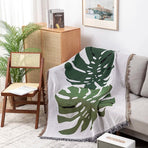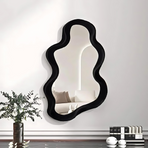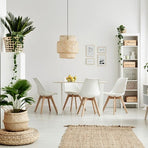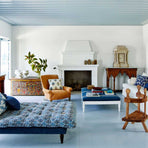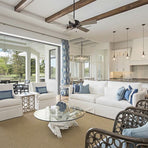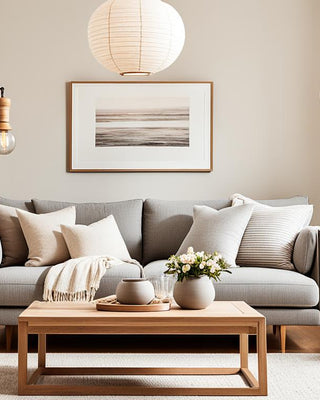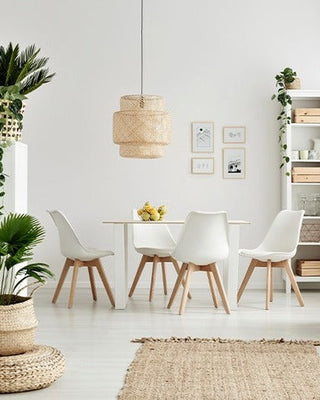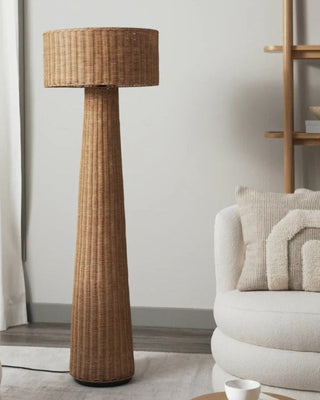In interior design, there’s a constant pursuit of the perfect balance of simplicity, functionality, and tranquility. As we explore different cultural design influences, we often find that combining traditional elements with contemporary aesthetics creates spaces that feel both timeless and modern. Among the most captivating design styles worldwide are Scandinavian, Japanese, Japandi, and Wabi Sabi. Each style offers a unique approach to creating peaceful, serene environments while maintaining elegance and sophistication.
Exploring the Design Philosophies
Each style tells a unique story, yet they all share one common thread: minimalism. Scandinavian, Japanese, Japandi, and Wabi Sabi styles are deeply rooted in simplicity, mindfulness, and a connection to nature. By understanding the core principles behind these design philosophies, we can create living spaces that foster calmness and tranquility, making our homes both beautiful and meaningful.
While Scandinavian and Japanese design styles originate from distinct cultural backgrounds, they both share a surprising harmony. It’s this blending of ancient traditions with modern sensibilities that creates such a captivating and enriching design dialogue. What fascinates me the most about these styles is how they allow us to transcend geographical boundaries, emphasizing a universal desire for beauty, calm, and connection.
The Essence of Scandinavian Design
Scandinavian interior design, also known as Scandi, is all about simplicity, practicality, and functionality. It originated in the early 20th century in the Nordic countries—Denmark, Finland, Iceland, Norway, and Sweden—as a response to harsh winters that demanded cozy and efficient living spaces. This style is characterized by clean lines, minimalist designs, and a focus on light, creating an inviting atmosphere even during the darkest months of the year.
A muted color palette of whites, greys, and pastels is typical of Scandi design, with an emphasis on natural light. Large windows and reflective surfaces ensure that light is maximized, brightening up the room. Scandinavian furniture is sleek, functional, and simple, yet crafted to the highest standards. It emphasizes durability and sustainability, as well as the Nordic value of "hygge," which denotes coziness, warmth, and comfort. This emphasis on comfort and high-quality craftsmanship makes Scandinavian design inviting, functional, and deeply rooted in tradition.
Understanding Japanese Interior Design
The Japanese approach to interior design is deeply influenced by Zen philosophy, with an emphasis on creating spaces that evoke calm, tranquility, and balance. Traditional Japanese interiors are more than just a visual style; they represent a mindful way of living that fosters harmony with the natural world. Natural materials such as wood, bamboo, and paper are common, enhancing the tactile connection with nature and the environment.
Japanese interiors are known for their neutral color schemes, soft hues, and an emphasis on natural light. This creates a peaceful, calming atmosphere that encourages relaxation and introspection. One iconic feature of Japanese design is the use of sliding doors and screens, known as "shoji," which create a fluid, adaptable living space. Furniture tends to be low to the ground, reflecting a humble and grounded approach to living that is ingrained in Japanese culture.
Introducing Wabi Sabi: Embracing Imperfection
Wabi Sabi is a Japanese concept that finds beauty in imperfection, impermanence, and incompleteness. Rooted in Zen Buddhism, Wabi Sabi encourages us to appreciate the natural aging process and accept flaws rather than strive for perfection. In interior design, Wabi Sabi highlights rough textures, natural materials, and simple forms. It embraces the quirks and individuality of handmade items and celebrates the stories behind each object.
Wabi Sabi challenges the modern obsession with flawless, mass-produced items, promoting a more authentic and thoughtful approach to home decor. It reminds us that true beauty often lies in imperfection and that simplicity when embraced, has its own inherent elegance. By incorporating Wabi Sabi, your home will feel rich with character, warmth, and a deep connection to the passage of time.
The Fusion of Japanese and Scandinavian Styles: Japandi
Japandi design is a fusion of Japanese and Scandinavian styles, blending the best elements of both to create spaces that are minimalist, functional, and warm. This style combines the calm simplicity and craftsmanship of Japanese design with the cozy, practical sensibility of Scandinavian style. Japandi interiors feature muted colors—soft neutrals of Scandinavian design and earthy tones of Japanese design—which come together to create a calm, inviting atmosphere.
The emphasis on natural materials, such as wood, is a core element of Japandi design. This tactile connection to nature enhances the organic, calming feel of the space. Every piece of furniture is carefully curated, ensuring it serves a purpose while maintaining simplicity and elegance. Japandi spaces are uncluttered and promote a sense of calm and well-being, creating an environment that feels peaceful, cozy, and functional.
Common Threads in Scandinavian, Japanese, Japandi, and Wabi Sabi
Despite their distinct origins, all four design styles share a commitment to minimalism, mindfulness, and an appreciation for natural materials. These styles prioritize function over excess, fostering uncluttered spaces that focus on what’s essential. The use of wood, stone, linen, and wool in each of these designs fosters a connection to the natural world, helping to create spaces that feel grounded and calming.
Craftsmanship is another shared value. In Scandinavian, Japanese, and Japandi designs, there’s a deep respect for high-quality, handmade items that are designed to last. This commitment to sustainability and mindful consumption speaks to a broader environmental consciousness that’s reflected in these design philosophies.
All of these styles celebrate the idea that "less is more," creating spaces that are simple yet elegant and practical yet beautiful. By embracing these principles, we can create homes that nurture our well-being, foster connection, and stand the test of time.
How to Incorporate These Styles into Your Home
To incorporate Scandinavian, Japanese, Japandi, or Wabi Sabi into your own home, begin by embracing minimalism and mindfulness. Start by decluttering, keeping only what you truly need and what brings you joy. Opt for furniture and decor that prioritize functionality, simplicity, and natural materials.
Use a muted color palette with soft neutrals as a base, and add subtle accents with textiles or artwork that reflect your personality. Natural light should be a focal point, so maximize natural lighting where possible and supplement it with soft, ambient fixtures. Incorporate plants and other natural elements to create a tranquil, peaceful atmosphere that connects your home to the outdoors.
Remember, the goal is not to copy these styles exactly but to interpret them in a way that resonates with your tastes and lifestyle. It’s about creating a space that feels authentic, comfortable, and uniquely yours.
Here are some stunning Lamps for a Japandi-inspired home:
- Washi Floor Lamp,
- Bonfilia Wood Table Lamp,
- Lisbeth Wall Lamp
- Lumi Table Lamp
- Kumo Retro Wall Light
- Sakura Wall Lamp
Personalizing Your Home: Your Interior Design Journey
Choosing the right interior design style for your home is a deeply personal decision, reflecting your values, lifestyle, and aesthetic preferences. Whether you're drawn to the cozy minimalism of Scandinavian design, the peaceful serenity of Japanese interiors, the beauty in the imperfection of Wabi Sabi, or the fusion of cultures in Japandi, each style offers a unique approach to creating a home that is both beautiful and meaningful.
As we've explored these design philosophies, it’s clear that they all share a common appreciation for minimalism, mindfulness, and the beauty of the natural world. By incorporating these concepts, we can transform our living spaces into peaceful sanctuaries that promote well-being and balance, no matter which style we choose to embrace.

